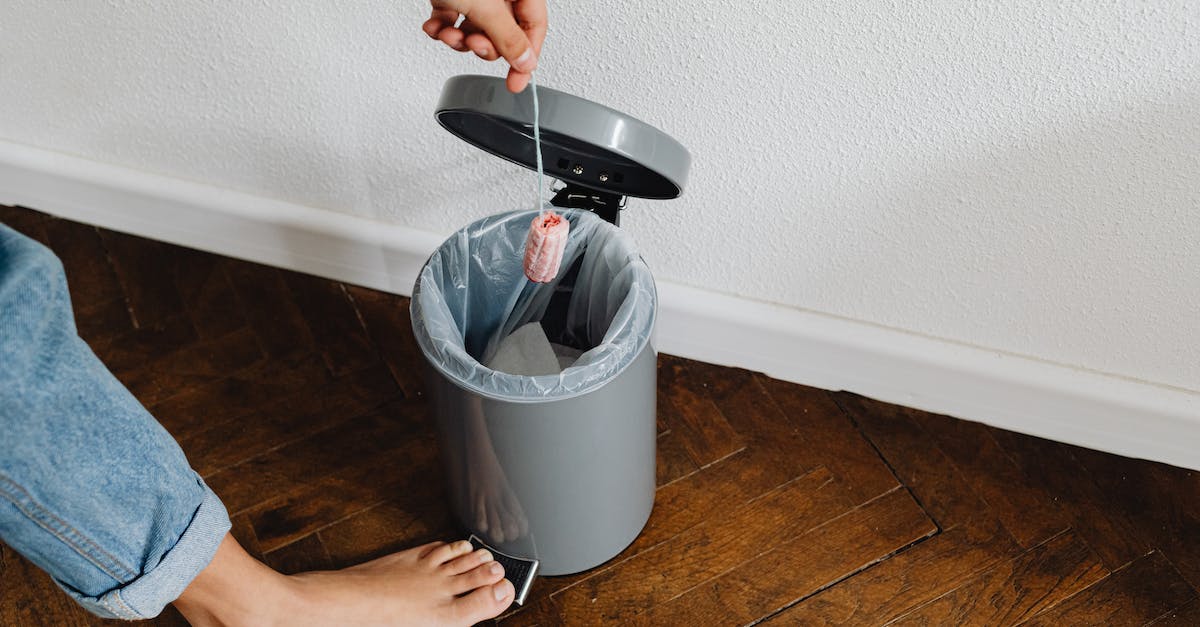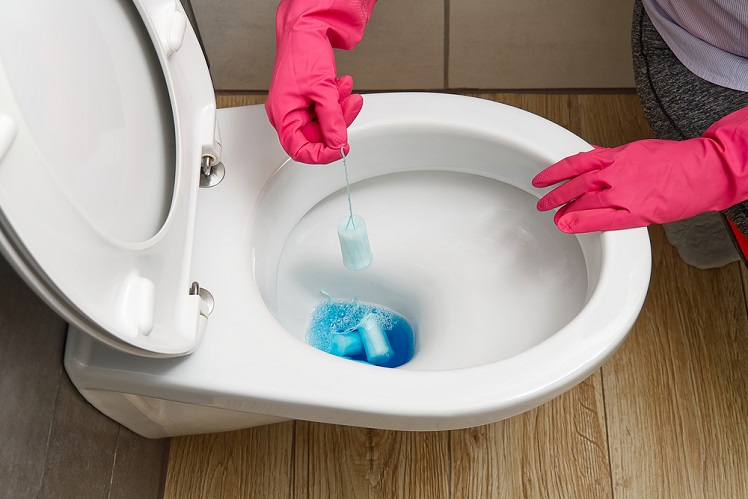Did you know that improper disposal of tampons can lead to contamination and potential health risks? It’s important to know the best ways to dispose of tampons to protect both the environment and our well-being. In this article, I’ll share with you some simple and responsible methods for disposing of tampons, ensuring that you’re not only keeping the surroundings clean but also maintaining good hygiene practices.
Contents
How to Dispose of Tampons?

When it comes to proper tampon disposal, it’s essential to follow the right methods to prevent contamination and potential health risks. Disposing of tampons correctly not only protects our health but also ensures the well-being of the environment. In this section, I will outline the best ways to dispose of tampons responsibly.
- Wrap it in toilet paper: Before throwing away a used tampon, it’s important to wrap it in toilet paper. This simple step helps contain any blood and minimize odors. By wrapping the tampon, you ensure that it is securely tucked away in the trash, reducing the risk of leakage or exposure.
- Use tampon disposal bags: For added protection and discretion, consider using tampon disposal bags. These bags provide a sanitary and convenient way to dispose of used tampons. Simply place the wrapped tampon inside the bag, seal it, and dispose of it in the trash.
- Designated sanitary disposal bins: In some public restrooms, you may find designated sanitary disposal bins for tampons and other menstrual hygiene products. These bins are specifically designed to safely collect and contain used tampons. If available, make use of these bins to ensure proper disposal.
By following these tips, you can dispose of tampons responsibly and minimize any potential health hazards. Remember, proper tampon disposal not only protects our health but also helps preserve the environment.
Keep in mind that tampons should never be flushed down the toilet. Flushing tampons can lead to plumbing issues and contribute to blockages in the sewage system. Instead, always dispose of tampons in the trash or designated sanitary bins.
Now that we’ve discussed how to dispose of tampons properly, let’s move on to exploring more eco-friendly options for tampon disposal.
Why Proper Disposal of Tampons is Important?
1. Prevents Health Risks
Proper disposal of tampons is crucial to prevent potential health risks. When tampons are not disposed of correctly, they can cause contamination and spread harmful bacteria and germs. This can lead to infections, such as bacterial vaginosis or toxic shock syndrome.
By wrapping used tampons in toilet paper before placing them in the trash, we can minimize the risk of exposure to harmful pathogens. This simple step helps protect ourselves and others from potential health problems.
2. Protects the Environment
In addition to safeguarding our health, proper tampon disposal also plays a significant role in protecting the environment. When tampons are flushed down the toilet, they can end up in our waterways, causing pollution and harm to aquatic wildlife.
It’s estimated that 2.5 million tampons are flushed every day, leading to costly maintenance and repair expenses for utilities. These costs not only impact the environment but also get passed on to consumers. By disposing of tampons responsibly, we can help prevent this environmental damage and reduce the financial burden on communities.
Choosing biodegradable and eco-friendly tampons is another great way to minimize the environmental impact of period hygiene products. By opting for sustainable options, we can contribute to a healthier planet and ensure a greener future for generations to come.
Remember, proper tampon disposal is not just about personal hygiene; it’s a responsibility we have towards our health and the environment. Let’s all make a conscious effort to dispose of tampons correctly and make a positive impact on both ourselves and the world around us.
Disposal of Tampons in Public Restrooms?
Unfortunately, not all public restrooms have adequate menstrual care provisions, which can be frustrating. In these situations, it’s important to take matters into your own hands to maintain hygiene and protect the environment. If there is no designated bin in the restroom, wrap your tampon up well in toilet paper and take it to the closest trashcan to dispose of it there. You can also use disposable bags for wrapping and carrying the tampon until you find a suitable trash bin.
Remember to give feedback to the responsible person or business about the need for adequate facilities for period waste.
Common Mistakes to Avoid

Flushing Tampons
One of the biggest mistakes when it comes to tampon disposal is flushing them down the toilet. I cannot stress enough how important it is to never flush tampons! Flushing tampons can lead to plumbing issues and environmental problems. Tampons do not break down quickly enough after flushing and can cause blockages. What’s worse, they can also contribute to fatbergs in sewage systems, which can harm wildlife and ecosystems. So remember, the only things you should flush down the toilet are the 3 P’s: pee, paper, and poo!
Improper Wrapping and Disposal
Another common mistake people make when disposing of tampons is improper wrapping and disposal. It’s important to wrap up your tampon with toilet paper or tissue before throwing it in the trash can. This helps contain any potential odors and prevents the tampon from coming into direct contact with other garbage. If you don’t have access to a garbage bin, you can also use disposable bags, preferably biodegradable ones. Remember, tampons and tampon applicators cannot be recycled, so proper wrapping and disposal is crucial.
Disposing in Inappropriate Containers
Lastly, another mistake to avoid is disposing of tampons in inappropriate containers. While it may be tempting to use any nearby container, it’s essential to use a designated trash bin for disposing of tampons. Make sure the trash can is lined and has a lid to contain any odors and prevent pets or animals from accessing the tampons. If you have pets, it’s even more important to consider using a dog-proof trash can. Remember, properly disposing of tampons not only protects your plumbing and the environment but also prevents the spread of germs and diseases.
Conclusion
Proper tampon disposal is a small but significant step towards a cleaner and healthier world. By following the guidelines and options provided in this article, you can ensure that you’re doing your part to protect yourself, others, and the environment.
So, next time you’re faced with the question of how to dispose of tampons, remember to choose the right method and make a positive impact.
Frequently Asked Questions
How do you dispose of a tampon without it smelling?
Tampons should be disposed of in the household waste. Many women dispose of their tampons by wrapping them in toilet paper and throwing them in the residual waste. Many public toilets have hygiene waste bins in which you should dispose of your hygiene products.
Will 1 tampon clog a toilet?
If you flush a tampon or pad down the toilet, it will come in contact with water (which is a liquid, by the way) and will enlarge. Clogging the toilet and the pipes. Unless you want a plumber to break open your toilet pipes, I would not recommend flushing your sanitary products down the toilet.
What can you do with unused tampons?
Unused tampons can be used for various purposes like stop nose bleeds, ear plugs, pretend sticks of dynamite for kids, mop up small spills, effectively dab away tears, or as an unusual hair accessory.
How do you dispose of expired tampons?
According to Tampax, tampons can’t be recycled, so the best thing you can do with expired tampons is to drop them in the garbage.
I am a medical student with experience and interest in Women’s health and well-being.